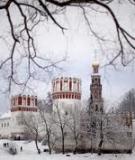
Preface
This book is a continuation Mathematical Olympiads 1995-1996: Olympiad
Problems from Around the World, published by the American Mathemat-
ics Competitions. It contains solutions to the problems from 25 national
and regional contests featured in the earlier pamphlet, together with se-
lected problems (without solutions) from national and regional contests
given during 1997.
This collection is intended as practice for the serious student who
wishes to improve his or her performance on the USAMO. Some of the
problems are comparable to the USAMO in that they came from na-
tional contests. Others are harder, as some countries first have a national
olympiad, and later one or more exams to select a team for the IMO. And
some problems come from regional international contests (“mini-IMOs”).
Different nations have different mathematical cultures, so you will find
some of these problems extremely hard and some rather easy. We have
tried to present a wide variety of problems, especially from those countries
that have often done well at the IMO.
Each contest has its own time limit. We have not furnished this in-
formation, because we have not always included complete contests. As a
rule of thumb, most contests allow a time limit ranging between one-half
to one full hour per problem.
Thanks to Walter Mientka for his continuing support of this project,
and to the students of the 1997 Mathematical Olympiad Summer Program
for their help in preparing solutions.
The problems in this publication are copyrighted. Requests for repro-
duction permissions should be directed to:
Dr. Walter Mientka
Secretary, IMO Advisory Broad
1740 Vine Street
Lincoln, NE 68588-0658, USA.

Contents
1 1996 National Contests:
Problems and Solutions 3
1.1 Bulgaria . . . . . . . . . . . . . . . . . . . . . . . . . . . . . 3
1.2 Canada . . . . . . . . . . . . . . . . . . . . . . . . . . . . . 9
1.3 China . . . . . . . . . . . . . . . . . . . . . . . . . . . . . . 12
1.4 Czech and Slovak Republics . . . . . . . . . . . . . . . . . . 17
1.5 France . . . . . . . . . . . . . . . . . . . . . . . . . . . . . . 22
1.6 Germany . . . . . . . . . . . . . . . . . . . . . . . . . . . . 25
1.7 Greece . . . . . . . . . . . . . . . . . . . . . . . . . . . . . . 27
1.8 Iran . . . . . . . . . . . . . . . . . . . . . . . . . . . . . . . 29
1.9 Ireland . . . . . . . . . . . . . . . . . . . . . . . . . . . . . . 34
1.10 Italy . . . . . . . . . . . . . . . . . . . . . . . . . . . . . . . 38
1.11 Japan . . . . . . . . . . . . . . . . . . . . . . . . . . . . . . 41
1.12 Poland . . . . . . . . . . . . . . . . . . . . . . . . . . . . . . 44
1.13 Romania . . . . . . . . . . . . . . . . . . . . . . . . . . . . . 47
1.14 Russia . . . . . . . . . . . . . . . . . . . . . . . . . . . . . . 57
1.15 Spain . . . . . . . . . . . . . . . . . . . . . . . . . . . . . . 76
1.16 Turkey . . . . . . . . . . . . . . . . . . . . . . . . . . . . . . 81
1.17 United Kingdom . . . . . . . . . . . . . . . . . . . . . . . . 84
1.18 United States of America . . . . . . . . . . . . . . . . . . . 89
1.19 Vietnam . . . . . . . . . . . . . . . . . . . . . . . . . . . . . 96
2 1996 Regional Contests:
Problems and Solutions 100
2.1 Asian Pacific Mathematics Olympiad . . . . . . . . . . . . . 100
2.2 Austrian-Polish Mathematics Competition . . . . . . . . . . 103
2.3 Balkan Mathematical Olympiad . . . . . . . . . . . . . . . . 108
2.4 Czech-Slovak Match . . . . . . . . . . . . . . . . . . . . . . 110
2.5 Iberoamerican Olympiad . . . . . . . . . . . . . . . . . . . . 114
2.6 St. Petersburg City Mathematical Olympiad . . . . . . . . 118
3 1997 National Contests:
Problems 131
3.1 Austria . . . . . . . . . . . . . . . . . . . . . . . . . . . . . 131
3.2 Bulgaria . . . . . . . . . . . . . . . . . . . . . . . . . . . . . 132
3.3 Canada . . . . . . . . . . . . . . . . . . . . . . . . . . . . . 136
3.4 China . . . . . . . . . . . . . . . . . . . . . . . . . . . . . . 137
1

3.5 Colombia . . . . . . . . . . . . . . . . . . . . . . . . . . . . 139
3.6 Czech and Slovak Republics . . . . . . . . . . . . . . . . . . 140
3.7 France . . . . . . . . . . . . . . . . . . . . . . . . . . . . . . 141
3.8 Germany . . . . . . . . . . . . . . . . . . . . . . . . . . . . 142
3.9 Greece . . . . . . . . . . . . . . . . . . . . . . . . . . . . . . 144
3.10 Hungary . . . . . . . . . . . . . . . . . . . . . . . . . . . . . 145
3.11 Iran . . . . . . . . . . . . . . . . . . . . . . . . . . . . . . . 146
3.12 Ireland . . . . . . . . . . . . . . . . . . . . . . . . . . . . . . 147
3.13 Italy . . . . . . . . . . . . . . . . . . . . . . . . . . . . . . . 148
3.14 Japan . . . . . . . . . . . . . . . . . . . . . . . . . . . . . . 149
3.15 Korea . . . . . . . . . . . . . . . . . . . . . . . . . . . . . . 150
3.16 Poland . . . . . . . . . . . . . . . . . . . . . . . . . . . . . . 152
3.17 Romania . . . . . . . . . . . . . . . . . . . . . . . . . . . . . 153
3.18 Russia . . . . . . . . . . . . . . . . . . . . . . . . . . . . . . 155
3.19 South Africa . . . . . . . . . . . . . . . . . . . . . . . . . . 161
3.20 Spain . . . . . . . . . . . . . . . . . . . . . . . . . . . . . . 162
3.21 Taiwan . . . . . . . . . . . . . . . . . . . . . . . . . . . . . . 163
3.22 Turkey . . . . . . . . . . . . . . . . . . . . . . . . . . . . . . 165
3.23 Ukraine . . . . . . . . . . . . . . . . . . . . . . . . . . . . . 166
3.24 United Kingdom . . . . . . . . . . . . . . . . . . . . . . . . 167
3.25 United States of America . . . . . . . . . . . . . . . . . . . 168
3.26 Vietnam . . . . . . . . . . . . . . . . . . . . . . . . . . . . . 169
4 1997 Regional Contests:
Problems 170
4.1 Asian Pacific Mathematics Olympiad . . . . . . . . . . . . . 170
4.2 Austrian-Polish Mathematical Competition . . . . . . . . . 171
4.3 Czech-Slovak Match . . . . . . . . . . . . . . . . . . . . . . 173
4.4 Hungary-Israel Mathematics Competition . . . . . . . . . . 174
4.5 Iberoamerican Mathematical Olympiad . . . . . . . . . . . 175
4.6 Nordic Mathematical Contest . . . . . . . . . . . . . . . . . 177
4.7 Rio Plata Mathematical Olympiad . . . . . . . . . . . . . . 178
4.8 St. Petersburg City Mathematical Olympiad (Russia) . . . 179
2

1 1996 National Contests:
Problems and Solutions
1.1 Bulgaria
1. Prove that for all natural numbers n≥3 there exist odd natural
numbers xn, ynsuch that 7x2
n+y2
n= 2n.
Solution: For n= 3 we have x3=y3= 1. Now suppose that
for a given natural number nwe have odd natural numbers xn, yn
such that 7x2
n+y2
n= 2n; we shall exhibit a pair (X, Y ) such that
7X2+Y2= 2n+1. In fact,
7xn±yn
22
+7xn∓yn
22
= 2(7x2
n+y2
n) = 2n+1.
One of (xn+yn)/2 and |xn−yn|/2 is odd (as their sum is the larger
of xnand yn, which is odd), giving the desired pair.
2. The circles k1and k2with respective centers O1and O2are exter-
nally tangent at the point C, while the circle kwith center Ois
externally tangent to k1and k2. Let ℓbe the common tangent of k1
and k2at the point Cand let AB be the diameter of kperpendicular
to ℓ. Assume that Oand Alie on the same side of ℓ. Show that the
lines AO2, BO1, ℓ have a common point.
Solution: Let r, r1, r2be the respective radii of k, k1, k2. Also let
Mand Nbe the intersections of AC and BC with k. Since AMB
is a right triangle, the triangle AMO is isosceles and
∠AMO =∠OAM =∠O1CM =∠CMO1.
Therefore O, M, O1are collinear and AM/MC =OM/M O1=r/r1.
Similarly O, N, O2are collinear and BN/NC =ON/NO2=r/r2.
Let Pbe the intersection of ℓwith AB; the lines AN, BM, CP con-
cur at the orthocenter of ABC, so by Ceva’s theorem, AP/P B =
(AM/M C)(CN/N B) = r2/r1. Now let D1and D2be the intersec-
tions of ℓwith BO1and AO2. Then CD1/D1P=O1C/P B =
r1/P B, and similarly CD2/D2P=r2/P A. Thus CD1/D1P=
CD2/D2Pand D1=D2, and so AO2, BO1, ℓ have a common point.
3

3. Let a, b, c be real numbers and let Mbe the maximum of the function
y=|4x3+ax2+bx +c|in the interval [−1,1]. Show that M≥1
and find all cases where equality occurs.
Solution: For a= 0, b =−3, c = 0, we have M= 1, with the
maximum achieved at −1,−1/2,1/2,1. On the other hand, if M < 1
for some choice of a, b, c, then
(4x3+ax2+bx +c)−(4x3+ 3x)
must be positive at −1, negative at −1/2, positive at 1/2, and
negative at 1, which is impossible for a quadratic function. Thus
M≥1, and the same argument shows that equality only occurs for
(a, b, c) = (0,−3,0). (Note: this is a particular case of the minimum
deviation property of Chebyshev polynomials.)
4. The real numbers a1, a2, . . . , an(n≥3) form an arithmetic progres-
sion. There exists a permutation ai1, ai2, . . . , ainof a1, a2, . . . , an
which is a geometric progression. Find the numbers a1, a2, . . . , anif
they are all different and the largest of them is equal to 1996.
Solution: Let a1< a2<··· < an= 1996 and let qbe the ratio of
the geometric progression ai1, . . . ain; clearly q6= 0,±1. By reversing
the geometric progression if needed, we may assume |q|>1, and so
|ai1|<|ai2|<··· <|ain|. Note that either all of the terms are
positive, or they alternate in sign; in the latter case, the terms of
either sign form a geometric progression by themselves.
There cannot be three positive terms, or else we would have a three-
term geometric progression a, b, c which is also an arithmetic pro-
gression, violating the AM-GM inequality. Similarly, there cannot
be three negative terms, so there are at most two terms of each sign
and n≤4.
If n= 4, we have a1< a2<0< a3< a4and 2a2=a1+a3,
2a3=a2+a4. In this case, q < −1 and the geometric progression is
either a3, a2, a4, a1or a2, a3, a1, a4. Suppose the former occurs (the
argument is similar in the latter case); then 2a3q=a3q3+a3and
2a3+a3q+a3q2, giving q= 1, a contradiction.
We deduce n= 3 and consider two possibilities. If a1< a2<
0< a3= 1996, then 2a2=a2q2+a2q, so q2+q−2 = 0 and
4






![Đề thi Tiếng Anh có đáp án [kèm lời giải chi tiết]](https://cdn.tailieu.vn/images/document/thumbnail/2025/20250810/duykpmg/135x160/64731754886819.jpg)




![Đề thi học kì 2 Vật lý lớp 11: Đề minh họa [Mới nhất]](https://cdn.tailieu.vn/images/document/thumbnail/2025/20250709/linhnhil/135x160/711752026408.jpg)








